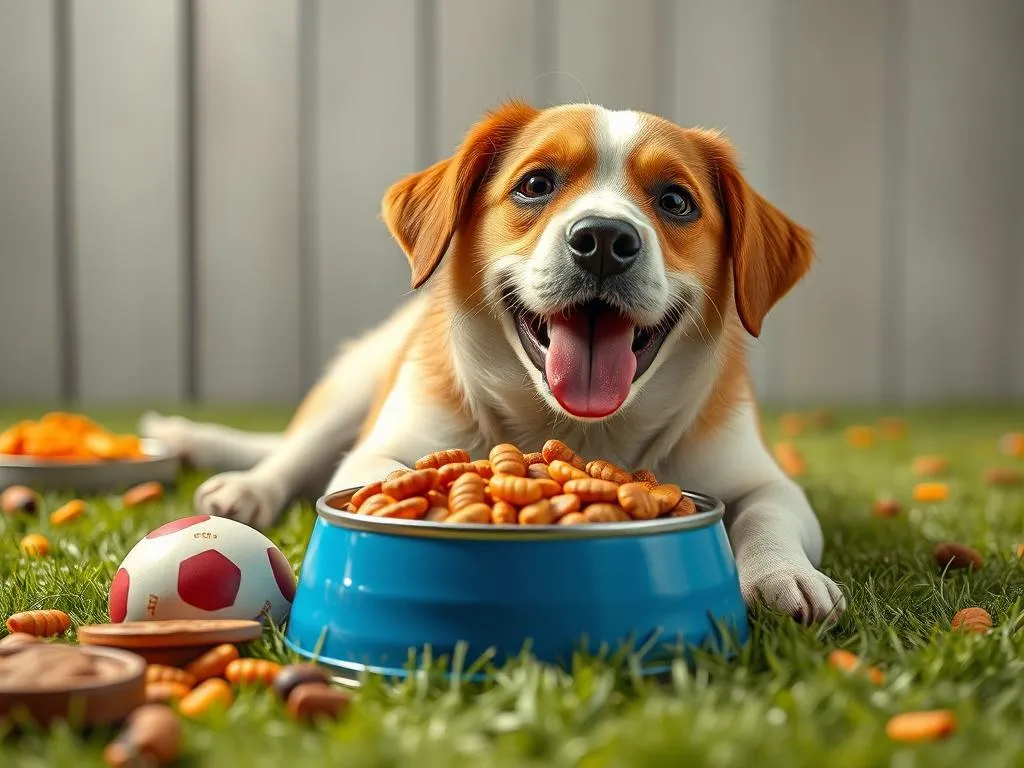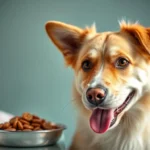
Introduction
Dog nutrition is crucial for the health and well-being of our furry friends. A balanced diet not only supports their physical health but also influences their behavior and energy levels. One innovative way to enhance a dog’s diet is through dog food games. These interactive activities combine feeding with play, making mealtime exciting and beneficial for your dog.
By engaging your dog with food games, you can promote healthy eating habits while providing mental and physical stimulation. This article will explore the essentials of dog nutrition, the role of play, various types of food games, and how to implement them into your daily routine for a healthier, happier dog.
Understanding Dog Nutrition
The Basics of Dog Nutrition
To keep your dog healthy, it’s essential to understand the core nutrients they require:
- Proteins: Vital for growth, maintenance, and repair of tissues. Look for high-quality protein sources like meat, fish, and eggs.
- Fats: Provide energy and support cell structure. Healthy fats, such as omega-3 and omega-6 fatty acids, are crucial for skin and coat health.
- Carbohydrates: Offer a source of energy and fiber. Whole grains and vegetables are excellent options.
- Vitamins and Minerals: Necessary for metabolic functions and overall health. Ensure your dog’s diet includes a variety of fruits and vegetables for these nutrients.
Different life stages require different nutritional considerations. Puppies, adults, and senior dogs have varying needs, so it’s important to choose a diet that matches their life stage.
Common Misconceptions about Dog Food
Many myths surround dog food that can lead to confusion. Here are a few common misconceptions:
- Myth: Grain-free diets are best for all dogs.
-
Fact: Most dogs can digest grains just fine. It’s essential to consult with a veterinarian before making significant dietary changes.
-
Myth: Homemade dog food is always healthier than commercial options.
- Fact: While homemade diets can be beneficial, they must be balanced and complete. It’s crucial to ensure that homemade meals meet all of your dog’s nutritional needs.
Understanding these misconceptions can help you make informed choices about your dog’s diet.
The Role of Play in Dog Nutrition
Benefits of Interactive Feeding
Incorporating play into your dog’s feeding routine can have significant benefits:
- Psychological Benefits: Interactive feeding reduces boredom and anxiety, keeping your dog mentally stimulated.
- Physical Benefits: Engaging in food games promotes exercise, helping to manage weight and maintain a healthy lifestyle.
How Games Affect Eating Habits
Interactive games can lead to healthier eating habits:
- Slower Eating: Many dogs tend to gulp down their food. By using dog food games, you can encourage slower eating, which aids digestion and can prevent issues like bloat.
- Problem-Solving Skills: Food games stimulate your dog’s brain and encourage them to think critically, enhancing their problem-solving abilities.
Types of Dog Food Games
Puzzle Feeders
Puzzle feeders are specially designed bowls or toys that require dogs to work for their food. They come in various shapes and complexity levels, making them suitable for all dog breeds.
- Functionality: Dogs must manipulate the feeder to access the food, providing mental stimulation and slowing down their eating.
- Recommended Products: Some popular puzzle feeders include the Outward Hound Hide-A-Squirrel and the Nina Ottosson Dog Twister.
- DIY Options: You can create your own puzzle feeder using muffin tins, tennis balls, and kibble. Simply place the kibble in the muffin tin and cover each hole with a tennis ball for a fun challenge.
Treat-Dispensing Toys
Treat-dispensing toys are another excellent option for interactive feeding. These toys release treats as your dog plays with them, making mealtime an adventure.
- How They Work: Dogs must roll, shake, or chew the toy to get the treats out, keeping them engaged and active.
- Best Brands: Popular options include the KONG Classic and the PetSafe Busy Buddy. These toys are durable and can be filled with various treats or kibble.
Hide and Seek with Food
Hide and seek is a simple yet effective game to engage your dog’s natural instincts.
- Instructions: Start by hiding small amounts of your dog’s food around the house or yard. Encourage your dog to find the hidden food by using cues like “find it!”
- Variations: To keep the game interesting, switch up the hiding spots or use different types of food each time. You can also hide yourself and call your dog to find you for an added twist!
Scent Games
Scent games are an excellent way to tap into your dog’s natural instincts. They encourage your dog to use their sense of smell to locate food.
- Explanation of Scent Work: Dogs have an incredible sense of smell, and engaging them in scent work can be both mentally and physically stimulating.
- Games to Encourage Sniffing: You can create scent trails using treats or kibble, leading your dog to a reward. Alternatively, hide treats in various locations and allow your dog to use their nose to find them.
Creating a Dog Food Game Routine
Assessing Your Dog’s Preferences
Every dog is unique, and their preferences can vary.
- Observing Behavior: Pay attention to how your dog reacts to different types of food games. Do they prefer puzzle toys, or do they enjoy sniffing out hidden treats?
- Tailoring Games: Consider your dog’s breed, age, and temperament when selecting games. Some breeds may thrive in more physically demanding activities, while others may prefer mentally stimulating challenges.
Incorporating Games into Daily Feeding
Integrating dog food games into your dog’s feeding routine can be simple and rewarding.
- Tips for Integration: Start by replacing one meal per day with a food game, gradually increasing the frequency as your dog becomes more accustomed to it.
- Recommended Frequency: Aim for 3-4 times a week to keep your dog engaged without overwhelming them.
Health Considerations
Portion Control and Weight Management
When incorporating dog food games, it’s essential to maintain portion control.
- Calculating Food Amounts: Adjust your dog’s regular food portions to account for the food used in games. Monitor their weight regularly to ensure they remain within a healthy range.
- Avoiding Overfeeding: Be mindful of the total amount of food your dog is receiving to prevent overfeeding and maintain a healthy weight.
Monitoring for Food Allergies or Sensitivities
As you introduce new games and foods, watch for any signs of allergies or sensitivities in your dog.
- Recognizing Signs: Common signs include itching, gastrointestinal upset, or unusual behavior. If you notice any of these symptoms, consult with your veterinarian.
- Adjusting Food Games: If your dog has allergies, ensure the treats and foods you use in games are safe and suitable for them.
Conclusion
Engaging your dog through dog food games not only enhances their diet but also promotes overall well-being. These interactive activities can lead to healthier eating habits, reduce boredom, and stimulate your dog’s mind and body. By experimenting with different games and incorporating them into your dog’s daily routine, you can create a fun and nutritious feeding experience that contributes to a healthier lifestyle for your furry friend.
As you embark on this journey, consider sharing your experiences and tips with the community, fostering a shared commitment to our dogs’ health and happiness.









